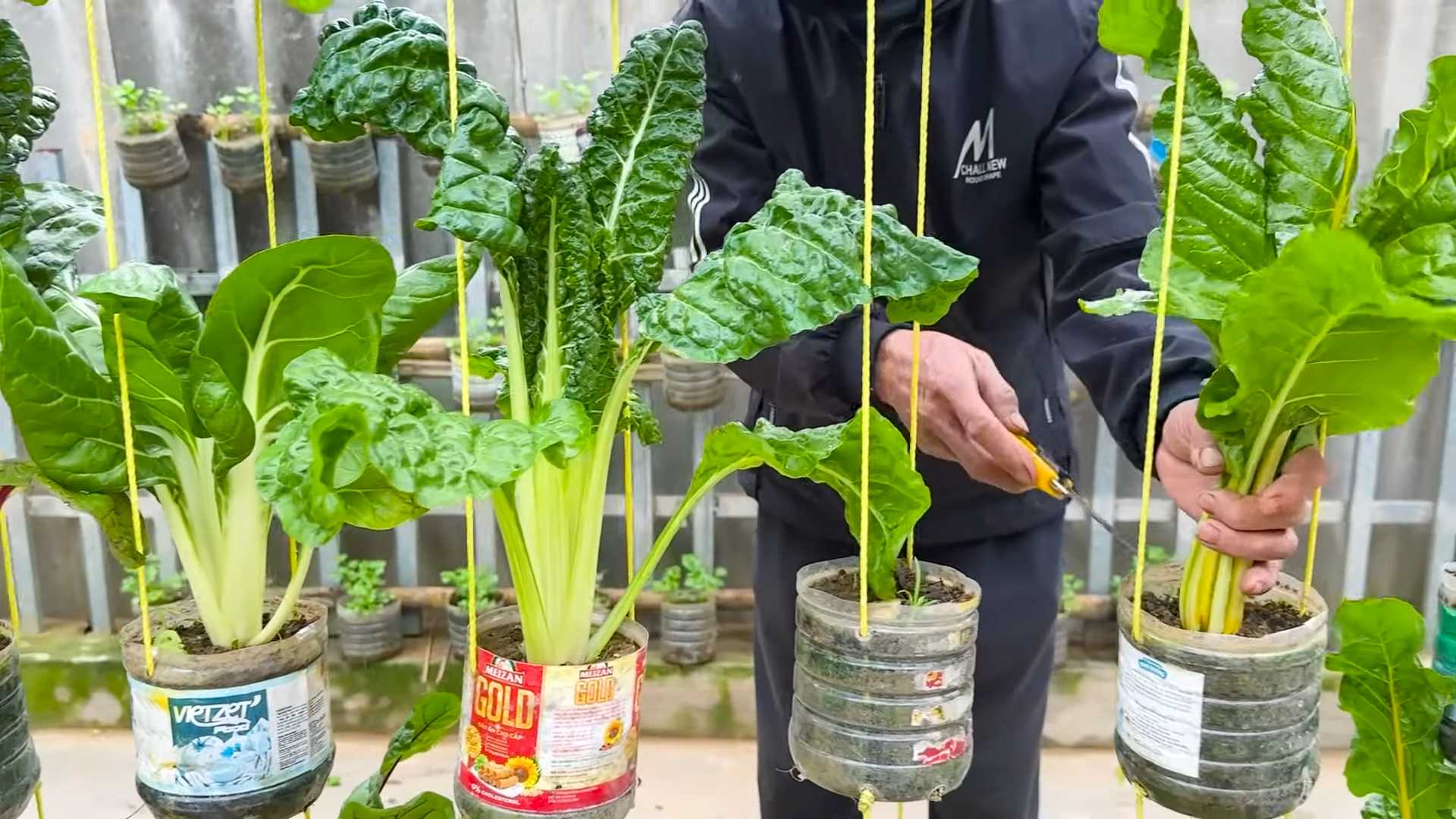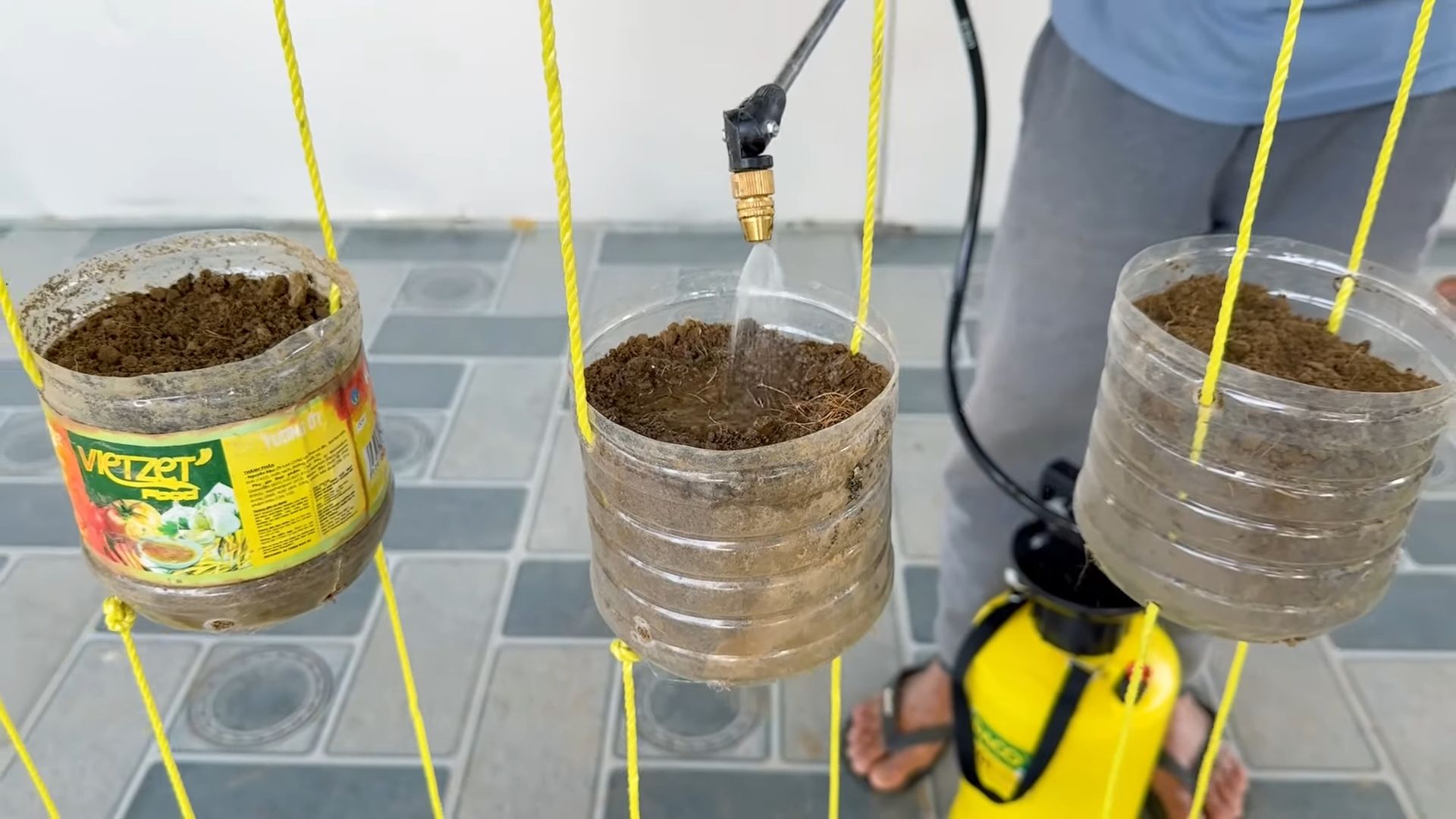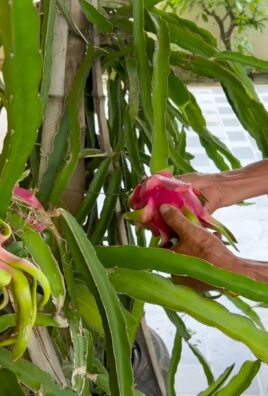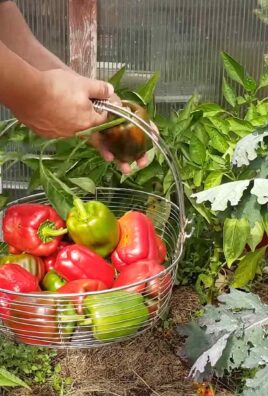Growing Rainbow Chard isn’t just about adding a leafy green to your plate; it’s about painting your garden with vibrant hues and bringing a touch of edible artistry to your backyard! Have you ever dreamed of a garden that looks like a watercolor painting come to life? Well, Rainbow Chard is your answer! This isn’t your grandma’s spinach (though, let’s be honest, grandma’s garden was probably amazing too!).
Chard, in general, has a rich history, dating back to ancient Greece and Rome, where it was valued for its medicinal properties and culinary versatility. But Rainbow Chard, with its kaleidoscope of stem colors – ruby red, sunshine yellow, bright orange, and snowy white – is a relatively modern marvel, bred for its visual appeal as much as its nutritional benefits.
I know what you’re thinking: “Sounds beautiful, but is it hard to grow?” That’s where this DIY guide comes in! Many people shy away from colorful vegetables, assuming they require expert gardening skills. But trust me, growing Rainbow Chard is surprisingly easy, even for beginners. I’m going to share some simple tricks and hacks that will have you harvesting a rainbow of deliciousness in no time. Plus, we’ll cover common problems and how to avoid them, ensuring your chard thrives and brightens your garden all season long. Get ready to impress your neighbors and enjoy fresh, healthy greens straight from your own backyard!

Growing Rainbow Chard: A Beginner’s Guide to Vibrant Veggies
Okay, so you want to add a splash of color to your garden and your plate? Rainbow chard is the answer! It’s surprisingly easy to grow, incredibly nutritious, and those vibrant stalks are just stunning. I’m going to walk you through everything you need to know, from seed to harvest. Trust me, even if you’re a complete newbie, you can do this!
Choosing Your Rainbow Chard Variety
First things first, let’s talk about varieties. While “Rainbow Chard” is the common name, there are actually a few different cultivars that make up that colorful mix. Here’s a quick rundown:
* Bright Lights: This is probably the most popular mix. You’ll get stalks in shades of red, orange, yellow, pink, and white. It’s a real showstopper!
* Five Color Silverbeet: Similar to Bright Lights, offering a range of colors in the stalks and veins.
* Charlotte: This one boasts deep red stalks and dark green leaves. It’s a beautiful and reliable variety.
* Fordhook Giant: While not technically “rainbow,” it’s a classic chard with large, dark green leaves and thick, white stalks. It’s a great option if you want something a little more traditional.
I personally love the Bright Lights mix because of the sheer variety of colors. But honestly, you can’t go wrong with any of these!
Getting Started: Planting Rainbow Chard
Rainbow chard is a cool-season crop, which means it thrives in cooler temperatures. Here’s how to get your plants off to a great start:
* Timing is Key: You can sow seeds directly into the garden in early spring (as soon as the soil is workable) or late summer for a fall harvest. If you live in a warmer climate, you can even grow it through the winter! I usually start my seeds indoors about 4-6 weeks before the last expected frost to get a head start.
* Starting Seeds Indoors (Optional):
1. Gather Your Supplies: You’ll need seed starting trays or small pots, seed starting mix (not regular potting soil!), and rainbow chard seeds.
2. Sow the Seeds: Moisten the seed starting mix and fill your trays or pots. Sow the seeds about 1/2 inch deep, placing 2-3 seeds per cell or pot.
3. Water Gently: Water the seeds gently, making sure not to wash them away. I like to use a spray bottle for this.
4. Provide Light: Place the trays or pots under grow lights or in a sunny window. You’ll need about 12-14 hours of light per day.
5. Keep Moist: Keep the soil consistently moist, but not soggy.
6. Thin Seedlings: Once the seedlings have a couple of true leaves (the leaves that look like miniature chard leaves), thin them to one plant per cell or pot. Choose the strongest seedling and snip off the others at the soil line.
* Direct Sowing in the Garden:
1. Prepare the Soil: Choose a spot in your garden that gets at least 6 hours of sunlight per day. Rainbow chard prefers well-drained soil that’s rich in organic matter. Amend the soil with compost or well-rotted manure before planting.
2. Sow the Seeds: Sow the seeds about 1/2 inch deep and 1-2 inches apart in rows.
3. Water Gently: Water the seeds gently after planting.
4. Thin Seedlings: Once the seedlings emerge and have a couple of true leaves, thin them to about 6-12 inches apart. This will give them enough room to grow.
Caring for Your Rainbow Chard Plants
Once your rainbow chard plants are established, they’re relatively low-maintenance. Here’s what you need to do to keep them happy and healthy:
* Watering: Rainbow chard needs consistent moisture, especially during hot, dry weather. Water deeply whenever the top inch of soil feels dry. Avoid overhead watering, as this can lead to fungal diseases.
* Fertilizing: Feed your rainbow chard plants every few weeks with a balanced organic fertilizer. You can also side-dress them with compost or well-rotted manure.
* Weeding: Keep the area around your rainbow chard plants free of weeds. Weeds compete with the chard for nutrients and water.
* Mulching: Apply a layer of mulch around your rainbow chard plants to help retain moisture, suppress weeds, and regulate soil temperature. Straw, wood chips, or shredded leaves are all good options.
* Pest Control: Rainbow chard is generally pest-resistant, but it can be susceptible to aphids, slugs, and snails.
* Aphids: You can control aphids by spraying them with a strong stream of water or by using insecticidal soap.
* Slugs and Snails: You can control slugs and snails by handpicking them off the plants, using beer traps, or applying diatomaceous earth around the plants.
* Disease Prevention: Rainbow chard can be susceptible to fungal diseases, such as leaf spot and downy mildew. To prevent these diseases, avoid overhead watering, provide good air circulation, and remove any infected leaves.
Harvesting Your Rainbow Chard
Now for the fun part – harvesting! You can start harvesting rainbow chard leaves as soon as they’re large enough to eat, usually when they’re about 6-8 inches long.
* Cut the Outer Leaves: Use a sharp knife or scissors to cut the outer leaves near the base of the plant, leaving the inner leaves to continue growing. This is called “cut-and-come-again” harvesting, and it allows you to harvest from the same plant for several months.
* Harvest Regularly: Harvest regularly to encourage new growth.
* Don’t Overharvest: Avoid harvesting more than one-third of the plant at a time, as this can weaken it.
* Enjoy Your Harvest: Rainbow chard is delicious raw or cooked. You can use it in salads, soups, stews, stir-fries, and more. The stalks are also edible and can be cooked like asparagus.
Troubleshooting Common Problems
Even with the best care, you might encounter a few problems when growing rainbow chard. Here are some common issues and how to deal with them:
* Bolting: Bolting is when the plant prematurely sends up a flower stalk. This usually happens when the weather gets too hot. To prevent bolting, plant rainbow chard in a shady spot during the hottest part of the summer. You can also choose bolt-resistant varieties.
* Yellowing Leaves: Yellowing leaves can be caused by a number of factors, including nutrient deficiencies, overwatering, and underwatering. Check the soil moisture and nutrient levels and adjust accordingly.
* Holes in Leaves: Holes in leaves are usually caused by pests, such as slugs, snails, or cabbage loopers. Inspect the plants for pests and take appropriate action.
Extending Your Harvest
Want to keep enjoying fresh rainbow chard for as long as possible? Here are a few tips:
* Succession Planting: Sow seeds every few weeks to ensure a continuous harvest.
* Cold Frames or Row Covers: Use cold frames or row covers to protect your rainbow chard plants from frost and extend the growing season.
* Overwintering: In mild climates, you can overwinter rainbow chard plants by mulching them heavily and protecting them from the coldest temperatures.
Rainbow Chard Recipes to Try
Okay, you’ve grown this beautiful rainbow chard, now what do you do with it? Here are a few of my favorite ways to use it:
* Sautéed Rainbow Chard with Garlic and Olive Oil: This is a simple and delicious way to enjoy rainbow chard. Just sauté the leaves and stalks with garlic and olive oil until tender. Season with salt and pepper to taste.
* Rainbow Chard and Ricotta Tart: This tart is a showstopper! Combine sautéed rainbow chard with ricotta cheese, eggs, and Parmesan cheese, and bake in a pie crust.
* Rainbow Chard and White Bean Soup: This soup is hearty and nutritious. Combine rainbow chard with white beans, vegetables, and broth. Season with herbs and spices to taste.
* Rainbow Chard Smoothie: Yes, you can even put rainbow chard in smoothies! It adds a boost of nutrients and a mild, earthy flavor. Combine it with fruits, vegetables, and yogurt or milk.
Final Thoughts
Growing rainbow chard is a rewarding experience. Not only will you have a beautiful and productive garden, but you’ll also have a delicious and nutritious vegetable to enjoy. So go ahead, give it a try! I promise you won’t be disappointed. And remember,

Conclusion
So, there you have it! Growing rainbow chard from seed to vibrant, leafy abundance is not only achievable but also incredibly rewarding. We’ve walked through the entire process, from selecting the right seeds and preparing your soil to nurturing your seedlings and harvesting those beautiful, multi-colored leaves.
Why is this DIY trick a must-try? Because it puts you in control of your food source, connects you with nature, and provides you with a continuous supply of fresh, nutritious greens that are far superior in flavor and quality to anything you can buy at the store. Imagine stepping out into your garden and snipping off a handful of ruby red, sunset orange, and canary yellow chard leaves to add a pop of color and flavor to your salads, stir-fries, or soups. The satisfaction is unparalleled.
But the benefits extend beyond just taste and aesthetics. Growing your own rainbow chard allows you to avoid harmful pesticides and herbicides, ensuring that you’re feeding yourself and your family the healthiest possible food. Plus, it’s a fantastic way to reduce your carbon footprint and contribute to a more sustainable lifestyle.
Looking for variations? Absolutely! Consider companion planting your rainbow chard with other vegetables and herbs. For example, planting it alongside onions, garlic, or carrots can help deter pests. You can also experiment with different varieties of chard, such as ‘Bright Lights’ (a popular mix of colors) or ‘Fordhook Giant’ (known for its large, dark green leaves and white stalks). If you’re short on space, rainbow chard thrives in containers, making it a perfect option for balconies or patios. Just be sure to choose a pot that’s at least 12 inches deep and wide to accommodate the plant’s root system.
Don’t be afraid to get creative with your harvest, too. While the leaves are delicious in salads and cooked dishes, the stalks can also be enjoyed. Simply chop them up and sauté them with garlic and olive oil for a simple and flavorful side dish. You can even pickle the stalks for a tangy treat.
We wholeheartedly encourage you to give this DIY trick a try. It’s easier than you might think, and the rewards are well worth the effort. Start small, be patient, and don’t be afraid to experiment. Remember, gardening is a journey, not a destination.
And most importantly, we want to hear about your experience! Share your photos, tips, and stories with us in the comments below. Let’s create a community of rainbow chard enthusiasts and inspire others to grow their own food. What challenges did you face? What successes did you celebrate? What are your favorite ways to use your homegrown rainbow chard? Your feedback is invaluable and will help us continue to improve and refine our gardening techniques. So, grab your seeds, get your hands dirty, and let’s grow some rainbow chard together! This is your chance to master the art of growing rainbow chard and enjoy the fruits (or rather, vegetables) of your labor.
Frequently Asked Questions (FAQ)
What is the best time of year to plant rainbow chard?
Rainbow chard is a cool-season crop, so the best time to plant it depends on your climate. In areas with mild winters, you can plant it in the fall for a winter or early spring harvest. In colder climates, plant it in the spring after the last frost. You can also start seeds indoors 6-8 weeks before the last frost and transplant them outdoors once the weather warms up. For a continuous harvest, consider succession planting, sowing new seeds every few weeks throughout the growing season.
How much sunlight does rainbow chard need?
Rainbow chard thrives in full sun, which means at least 6 hours of direct sunlight per day. However, it can also tolerate partial shade, especially in hot climates. If you’re growing it in a container, be sure to place it in a sunny location. If you notice that your chard leaves are pale or leggy, it may not be getting enough sunlight.
What kind of soil is best for rainbow chard?
Rainbow chard prefers well-drained soil that is rich in organic matter. Before planting, amend your soil with compost or aged manure to improve its fertility and drainage. A slightly acidic to neutral soil pH (6.0-7.0) is ideal. You can test your soil pH with a home testing kit or send a sample to your local agricultural extension office.
How often should I water rainbow chard?
Rainbow chard needs consistent moisture to thrive. Water deeply whenever the top inch of soil feels dry to the touch. Avoid overwatering, as this can lead to root rot. Mulching around your plants with straw or wood chips can help retain moisture and suppress weeds. During hot, dry weather, you may need to water more frequently.
What are some common pests and diseases that affect rainbow chard?
Rainbow chard is generally resistant to pests and diseases, but it can be susceptible to aphids, flea beetles, slugs, and snails. To control these pests, you can use insecticidal soap, diatomaceous earth, or handpick them off the plants. Diseases such as leaf spot and downy mildew can also affect rainbow chard. To prevent these diseases, ensure good air circulation around your plants and avoid overhead watering. If you notice any signs of disease, remove the affected leaves immediately.
How do I harvest rainbow chard?
You can start harvesting rainbow chard leaves when they are about 6 inches long. Simply cut the outer leaves near the base of the plant, leaving the inner leaves to continue growing. This cut-and-come-again method allows you to harvest chard continuously throughout the growing season. Avoid harvesting more than one-third of the plant at a time to ensure that it continues to produce new leaves.
Can I eat the stalks of rainbow chard?
Yes, the stalks of rainbow chard are edible and delicious! They have a slightly sweeter and milder flavor than the leaves. To prepare the stalks, simply wash them thoroughly and chop them into bite-sized pieces. You can sauté them with garlic and olive oil, add them to soups or stews, or pickle them for a tangy treat.
How do I store rainbow chard?
To store rainbow chard, wash the leaves and stalks thoroughly and pat them dry. Wrap them loosely in a damp paper towel and store them in a plastic bag in the refrigerator. Rainbow chard will keep for up to a week in the refrigerator. You can also freeze rainbow chard for longer storage. To freeze it, blanch the leaves and stalks in boiling water for 2 minutes, then plunge them into ice water to stop the cooking process. Drain them well and store them in freezer bags or containers.
Is rainbow chard nutritious?
Yes, rainbow chard is a highly nutritious vegetable. It is an excellent source of vitamins A, C, and K, as well as minerals such as iron, magnesium, and potassium. It is also a good source of fiber and antioxidants. Eating rainbow chard can help boost your immune system, improve your bone health, and protect against chronic diseases.
Can I grow rainbow chard in containers?
Absolutely! Rainbow chard thrives in containers, making it a perfect option for balconies or patios. Choose a pot that’s at least 12 inches deep and wide to accommodate the plant’s root system. Use a well-draining potting mix and be sure to water regularly. Place the container in a sunny location and fertilize every few weeks with a balanced fertilizer.





Leave a Comment